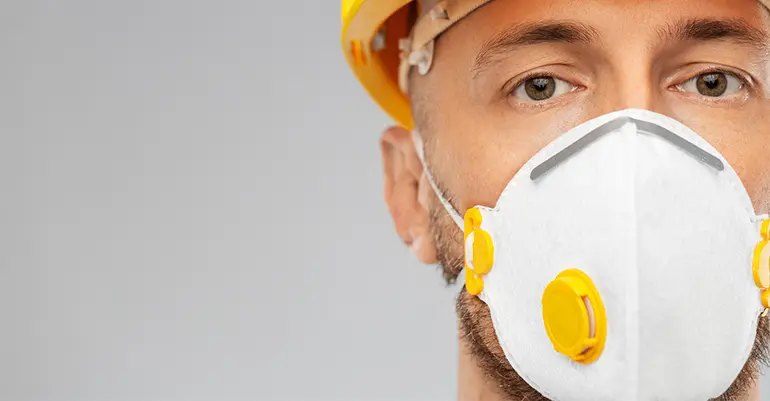
RESPIRATORS; USE, CARE AND STORAGE
Respiratory protection masks are essential personal protective equipment on construction sites. They allow you to work in contaminated environmental conditions that put workers' health at risk. Since the market offers a wide variety of masks, it is important to know which one to choose. This choice will be determined by many factors associated with the sector of activity, the environment and the workplace. When APECQ's health and safety advisors visit work sites, it is not uncommon to find that more than half of the workers who wear a respirator do not have the knowledge required for its proper use. Use, maintenance, storage. Our experts suggest that you learn more about respirators.
FREQUENT NON-CONFORMITIES AND ERRORS
Fit Test
In talking with workers, the team noticed that many workers had never performed a FIT TEST, or that the test was more than two (2) years old.Did you know that the fit test is mandatory in the same way that it is mandatory to have a driver's license to drive a car?
Indeed, the Fit Test must be done at different times:
- when purchasing a new device;
- to the training of a new employee;
- following a major physical change (weight gain or loss, tooth removal, dentures or change in facial appearance);
- if the device is modified;
- if the user notices a loss of seal;
- at least every 2 years.
Incorrect use
The second most common non-compliance on job sites is the improper use of respirators. Often workers use a mask that is lying around in the toolbox or in the truck. It is important to remember that this protective equipment is personal. It cannot be exchanged between workers. It is the workers' responsibility to make sure that the cartridges are working. It is not uncommon to see masks that continue to be used even after several years without the cartridges having been changed. To ensure the proper functioning of this protective equipment, workers should follow the manufacturer's recommendations and perform the necessary maintenance. In case of doubt, refer to the available documentation, to the respiratory protection program included in the prevention program and to the occupational health and safety prevention consultant.
Different types of cartridges exist for different types of work, so it is essential to use the right ones at the right time. For example, particulate cartridges should not be used when the hazard type is organic.
Many workers wear beards, either to keep up with trends or as a personal choice. It is important to understand that even if the beard is well-groomed, it may prevent the safe use of the machine. Workers should pay special attention to this, as it could be detrimental to their health.
MASK MAINTENANCE
Of course, to remain effective, respirators must be well maintained and, most importantly, properly stored. Too often, these are left lying around in areas where dust and contaminants can be plentiful. When the time comes, the worker who picks up their mask and sucks in the hazardous dust they are supposed to be protected from. So here are some tips:
- When not being worn, the device should be stored in a place where it cannot be contaminated.
- The respirator should be cleaned before and after each use with cleaning wipes.
- At least once a week the unit must be disinfected. This process involves several steps:
- it must be disassembled, washed in warm soapy water with a brush.
- Then the parts should be rinsed and inspected. Soak them in a disinfectant solution for at least 5 minutes and rinse them again.
- Allow the parts to dry before reassembling the unit and store in an airtight bag.
Through the inspection of the mask, it is possible to find defective or worn parts. It is important to replace them. All of these steps should be recorded. The respirator should be stored in a sealed bag away from sunlight, cold, heat, grease or dust. The cartridges should be stored separately in another airtight bag and laid flat. Do not place any objects on your mask to avoid deforming it.
Worker safety is a priority! If additional information is needed, if an occupational health and safety coaching service would be beneficial or if training on the use or maintenance of protective equipment would be an asset, contact our occupational health and safety experts.